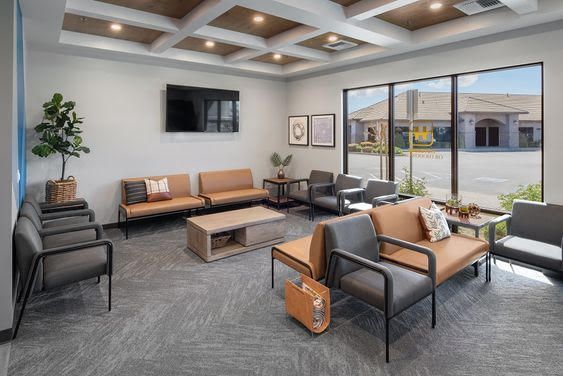Views: 0 Author: Site Editor Publish Time: 2024-05-09 Origin: Site








In the realm of interior design and furnishing, the needs and requirements of different industries vary significantly. This is particularly evident in the stark contrast between healthcare furniture and ordinary furniture. While both serve the purpose of providing comfort and functionality, they are tailored to meet distinct demands and environments. In this article, we'll delve into the key differences between healthcare furniture and ordinary furniture to shed light on their unique characteristics and applications.
Purpose and Functionality
Healthcare Furniture:
Healthcare furniture is designed with the primary objective of supporting patient care and well-being within medical facilities such as hospitals, clinics, and long-term care facilities. These pieces prioritize functionality, durability, and infection control, catering to the specific needs of healthcare professionals and patients alike. Features such as adjustable height, antimicrobial materials, and ease of cleaning are common in healthcare furniture to ensure optimal hygiene and patient comfort.
Ordinary Furniture:
Ordinary furniture, on the other hand, encompasses a broad range of furnishings intended for residential, commercial, or general use. From living room sofas to office desks, ordinary furniture is typically chosen based on aesthetic preferences, comfort, and suitability for specific spaces. While functionality is still important, ordinary furniture may not prioritize factors like infection control or ergonomics to the same extent as healthcare furniture.
Design and Construction
Healthcare Furniture:
The design of healthcare furniture often emphasizes practicality and safety over aesthetics. Clean lines, smooth surfaces, and minimal crevices reduce the risk of bacterial growth and make cleaning and disinfection easier. Additionally, healthcare furniture is engineered to withstand rigorous use and frequent sanitization without compromising structural integrity.
Ordinary Furniture:
In contrast, ordinary furniture places greater emphasis on design aesthetics and personal style preferences. While durability and quality are still valued, ordinary furniture may feature intricate detailing, decorative elements, and a wider variety of materials to suit diverse design preferences and home décor themes.

Materials and Finishes
Healthcare Furniture:
Materials used in healthcare furniture are selected with infection control and durability in mind. Common materials include antimicrobial upholstery fabrics, non-porous surfaces such as laminate or vinyl, and metal frames for added strength. These materials are chosen for their ability to withstand disinfection processes and maintain a hygienic environment.
Ordinary Furniture:
Ordinary furniture offers a broader range of material options, including wood, leather, fabric, and various synthetic materials. While aesthetics and comfort are prioritized, the choice of materials may not always consider factors like resistance to stains or ease of cleaning, as is the case with healthcare furniture.
Ergonomics and Accessibility
Healthcare Furniture:
Ergonomics play a crucial role in healthcare furniture design to ensure both patients and caregivers can interact with the furniture comfortably and safely. Adjustable features, such as height-adjustable beds and chairs, facilitate proper positioning and support for individuals with diverse mobility needs.
Ordinary Furniture:
While some ordinary furniture may incorporate ergonomic principles, such as ergonomic office chairs, it is not a universal consideration. Accessibility features, such as wheelchair accessibility or adjustable components, are less common in ordinary furniture compared to healthcare-specific designs.
Conclusion
In summary, the distinction between healthcare furniture and ordinary furniture lies in their design principles, functionality, materials, and intended use. While both serve the purpose of providing comfort and support, healthcare furniture prioritizes factors like infection control, durability, and accessibility to meet the unique demands of medical environments. Understanding these differences is essential for healthcare facilities and designers to make informed decisions when selecting furnishings that align with their specific requirements and priorities.